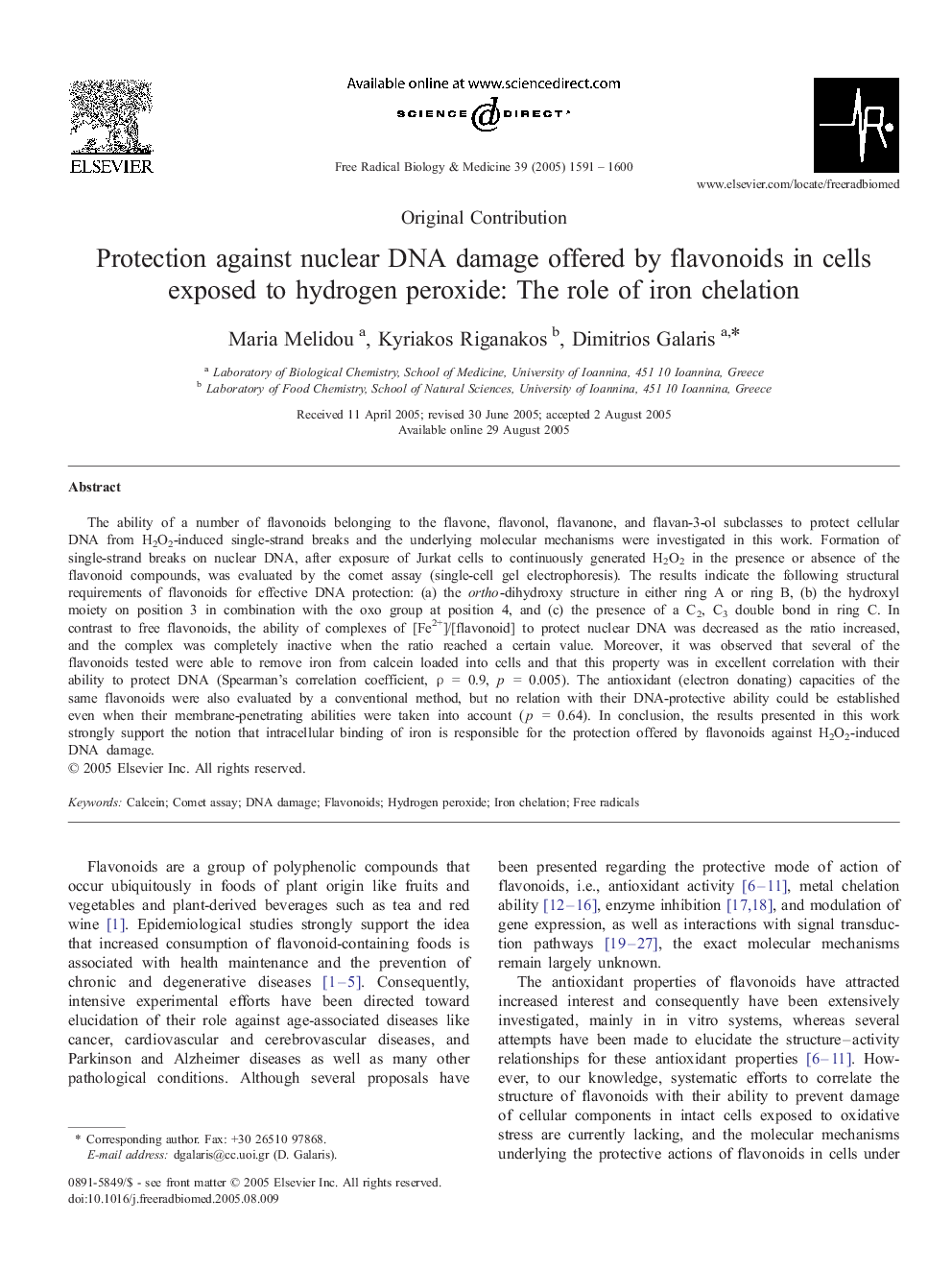| کد مقاله | کد نشریه | سال انتشار | مقاله انگلیسی | نسخه تمام متن |
|---|---|---|---|---|
| 10739373 | 1046873 | 2005 | 10 صفحه PDF | دانلود رایگان |
عنوان انگلیسی مقاله ISI
Protection against nuclear DNA damage offered by flavonoids in cells exposed to hydrogen peroxide: The role of iron chelation
دانلود مقاله + سفارش ترجمه
دانلود مقاله ISI انگلیسی
رایگان برای ایرانیان
کلمات کلیدی
موضوعات مرتبط
علوم زیستی و بیوفناوری
بیوشیمی، ژنتیک و زیست شناسی مولکولی
سالمندی
پیش نمایش صفحه اول مقاله

چکیده انگلیسی
The ability of a number of flavonoids belonging to the flavone, flavonol, flavanone, and flavan-3-ol subclasses to protect cellular DNA from H2O2-induced single-strand breaks and the underlying molecular mechanisms were investigated in this work. Formation of single-strand breaks on nuclear DNA, after exposure of Jurkat cells to continuously generated H2O2 in the presence or absence of the flavonoid compounds, was evaluated by the comet assay (single-cell gel electrophoresis). The results indicate the following structural requirements of flavonoids for effective DNA protection: (a) the ortho-dihydroxy structure in either ring A or ring B, (b) the hydroxyl moiety on position 3 in combination with the oxo group at position 4, and (c) the presence of a C2, C3 double bond in ring C. In contrast to free flavonoids, the ability of complexes of [Fe2+]/[flavonoid] to protect nuclear DNA was decreased as the ratio increased, and the complex was completely inactive when the ratio reached a certain value. Moreover, it was observed that several of the flavonoids tested were able to remove iron from calcein loaded into cells and that this property was in excellent correlation with their ability to protect DNA (Spearman's correlation coefficient, Ï = 0.9, p = 0.005). The antioxidant (electron donating) capacities of the same flavonoids were also evaluated by a conventional method, but no relation with their DNA-protective ability could be established even when their membrane-penetrating abilities were taken into account (p = 0.64). In conclusion, the results presented in this work strongly support the notion that intracellular binding of iron is responsible for the protection offered by flavonoids against H2O2-induced DNA damage.
ناشر
Database: Elsevier - ScienceDirect (ساینس دایرکت)
Journal: Free Radical Biology and Medicine - Volume 39, Issue 12, 15 December 2005, Pages 1591-1600
Journal: Free Radical Biology and Medicine - Volume 39, Issue 12, 15 December 2005, Pages 1591-1600
نویسندگان
Maria Melidou, Kyriakos Riganakos, Dimitrios Galaris,